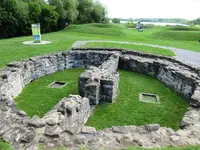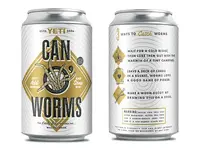It looks as though your knowledge of Scottish geography isas poor as your knowledge of London streets. It was you who started talkingabout North East Scotland, and now you have switched to the West coast. Howmany Templars are there?
The Highlands and Islands have a very different culturalhistory from the North East- taken first by the Irish Scots and then theNorwegians and do not come back into Scottish control until after the Battle ofLargs. But an area of mixed Gaelic and Scandinavian place-names andsettlements. North East is quite different- Norse attacks but no evidence ofsettlement- place-names Pictish, Gaelic and Scots-English. I doubt there were manycultural Scandinavians in Nairn or Aberdeen in 1300, chatting to Templars. There is a reason why the county of Sutherland has its name- it is the southernmost part of the Scottish mainland that came under Norse control, and its quite a bit north of Nairn, Maryculter or Aberdeen.
Now I am pretty certain we have discussed these 100 housesbefore. The impression I have is that when you say 100 houses, you arepicturing 100 monasteries, stuffed with Templars. This is not a true picture.These properties are gathered round about ten centres- none of them in thewestern isles or Highlands, by the way. They are basically properties fromwhich the Templars draw revenue, not where they lived. And you don’t even knowhow many Templars were in Scotland at any one time to have these fictitiousconversations with “Vikings”. Weren’t there only about 2 in 1310? There is noevidence of Templars hiding in Scotland- the Hospitallers took over theirproperties; doesn’t seem to have had much problems there.
I am not sure that all “educated Europeans” knew about landto the west, they may have known about Ultima Thule, but Greenland’s contactsare beginning to loosen at this period. Even the ties between Norway/Denmark andIceland were not as close. By 1300 the Hanseatic League were beginning tocontrol the trade between Iceland and Europe. Can you show us real, actual evidencethat the knowledge of Vinland was alive in Europe beyond Scandinavia.
Finally, if you are going to put any of this this in yourfamous book- I seem to recall you had finished it before you came here- fiveyears ago- has it been published yet? - I would learn to spell Maryculterproperly.
As I recall you posted a tube map for London streets, your sticking point was that nobody from Temple Church could have seen the Charing Cross, at less than 3/4 mile, being erected. When I mentioned being able to see people at one mile I believe you wrote that was impossible.
I do know West from East btw, and neither I nor you know how many Templars were in Scotland, but I am sure it was way more than two, with Maryculter, Balantrodoch and other sites probably in the hundreds. It is common knowledge that some who fled France went to Scotland.
I think you are actually referring to the two who were tried at Holyrood, but at the time, 1309, I believe, it was under English control and the two Templars were tried by English officials. The fact is that Scotland never arrested any Templars completely ignoring the Pope's order. One of the two tried at Holyrood actually testified that his superior had fled across the sea.
How many were housed at Balantrodoch?
In the Western Highlands of Scotland there is DNA evidence of Viking descent. My GG Grandmother was from Connel later moving to Paisley and the family has Norse traces from her. Even the Sinclair's of Roslin are said to have Norse roots.
It is also common knowledge that most educated Europeans did not believe in a flat earth, therefore there was land to the West.
As I mentioned before, my point here is only to show that the Templars could have easily received a map of the Viking routes to Vinland, A map that I've always maintained, today could have been drawn on a bar napkin.
No, the book (not famous btw, unless you knowing about it makes it famous) is not yet published being still a work in progress although I have published two other actual history books in the meantime, but thanks for asking.
Maryculter/ Maryculter/ Maryculter, did I get it right this time? How about a bonus for Peterculter?
IMHO, anyone who would think that Templars and Norse (at the very least descendants of Norse)did not communicate in Scotland is naive indeed.
Cheers, Loki






